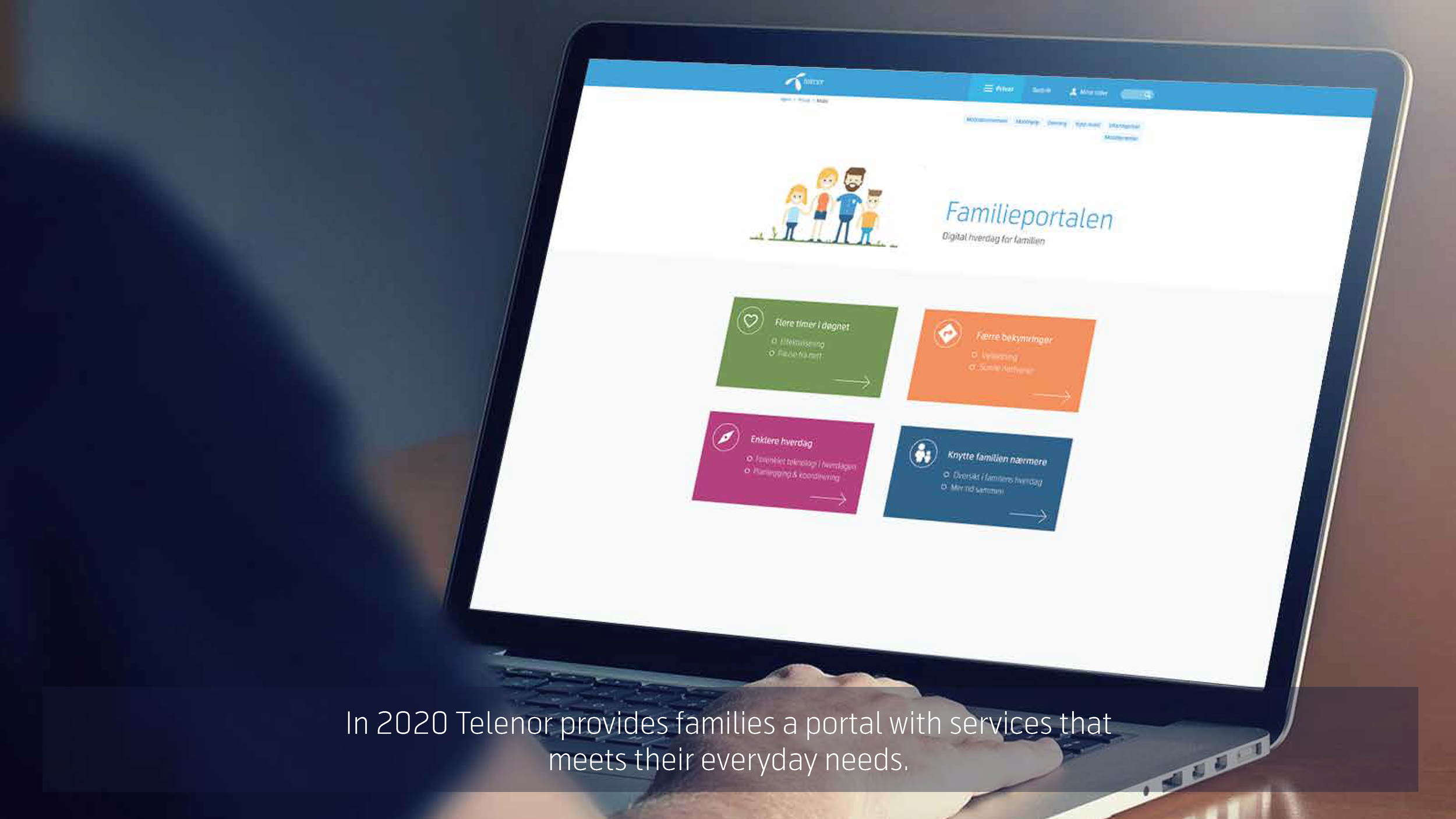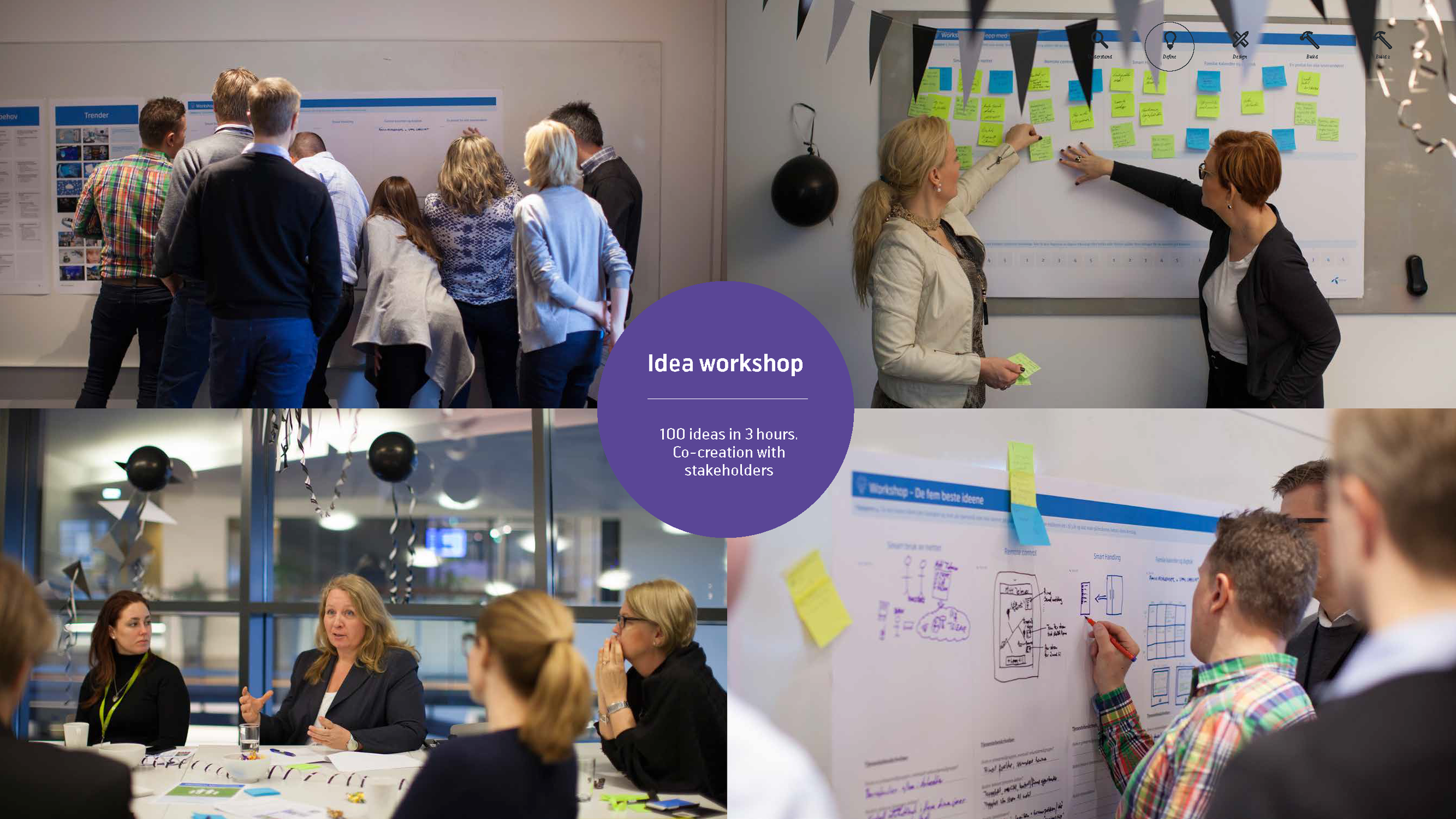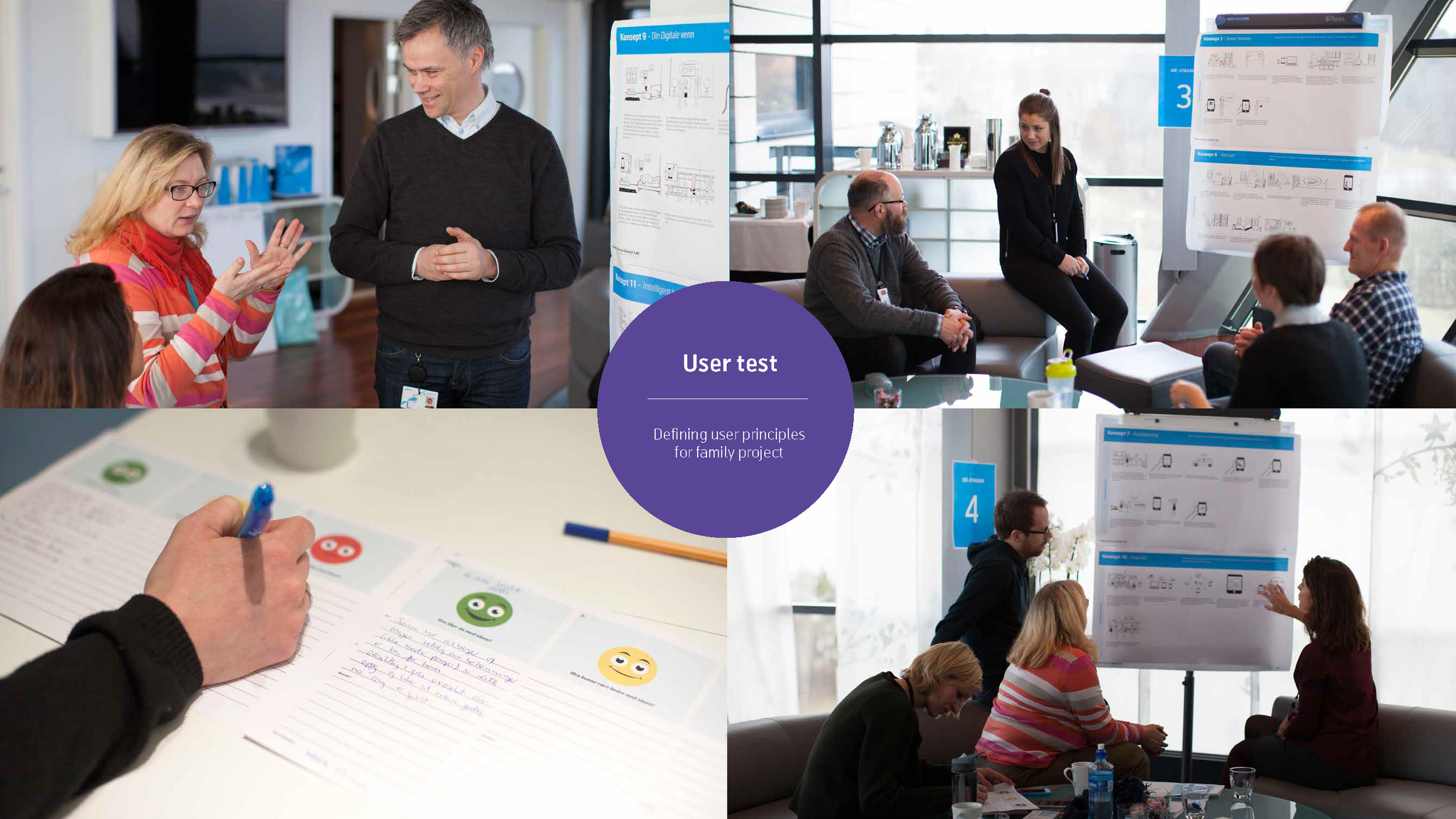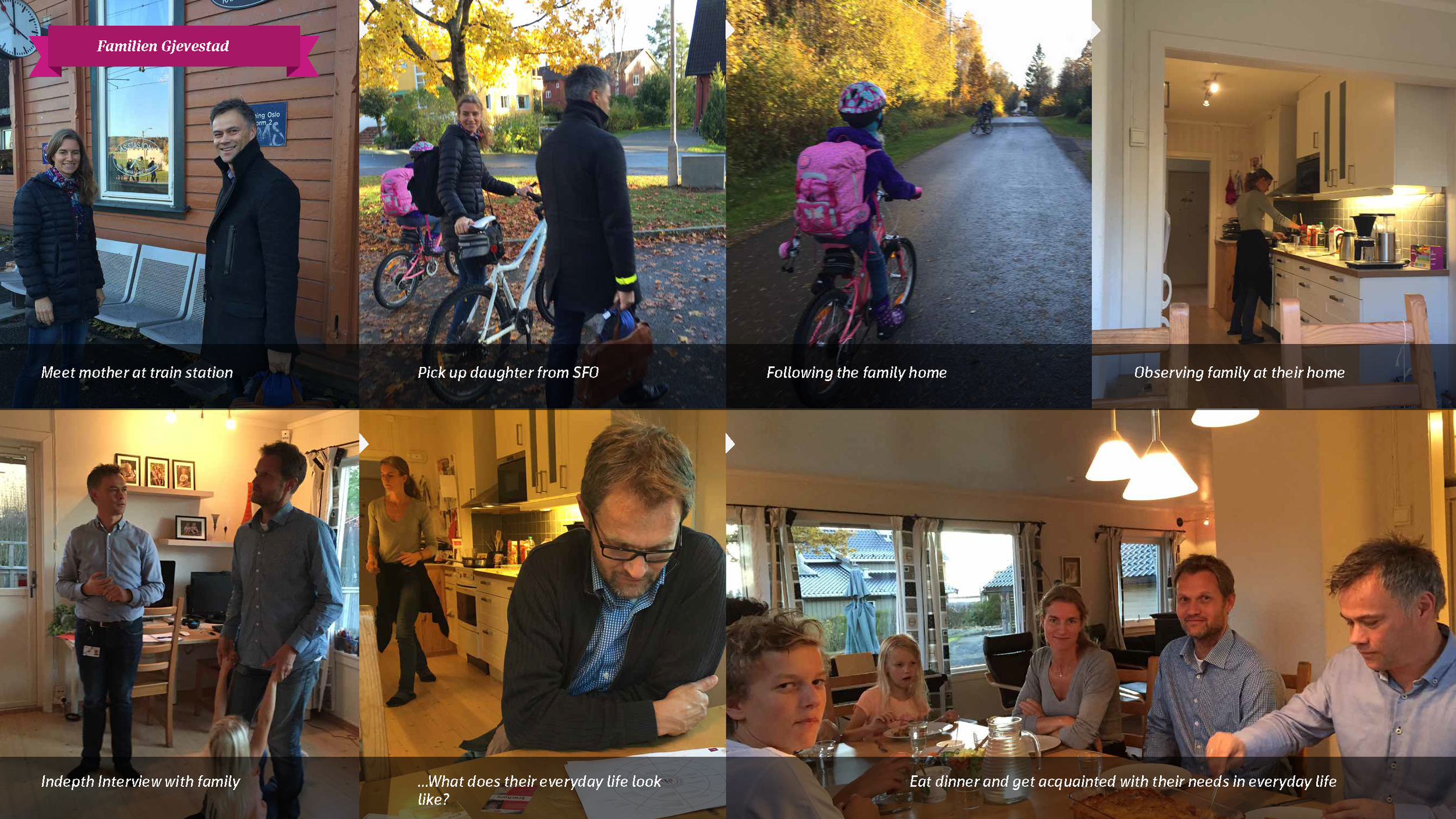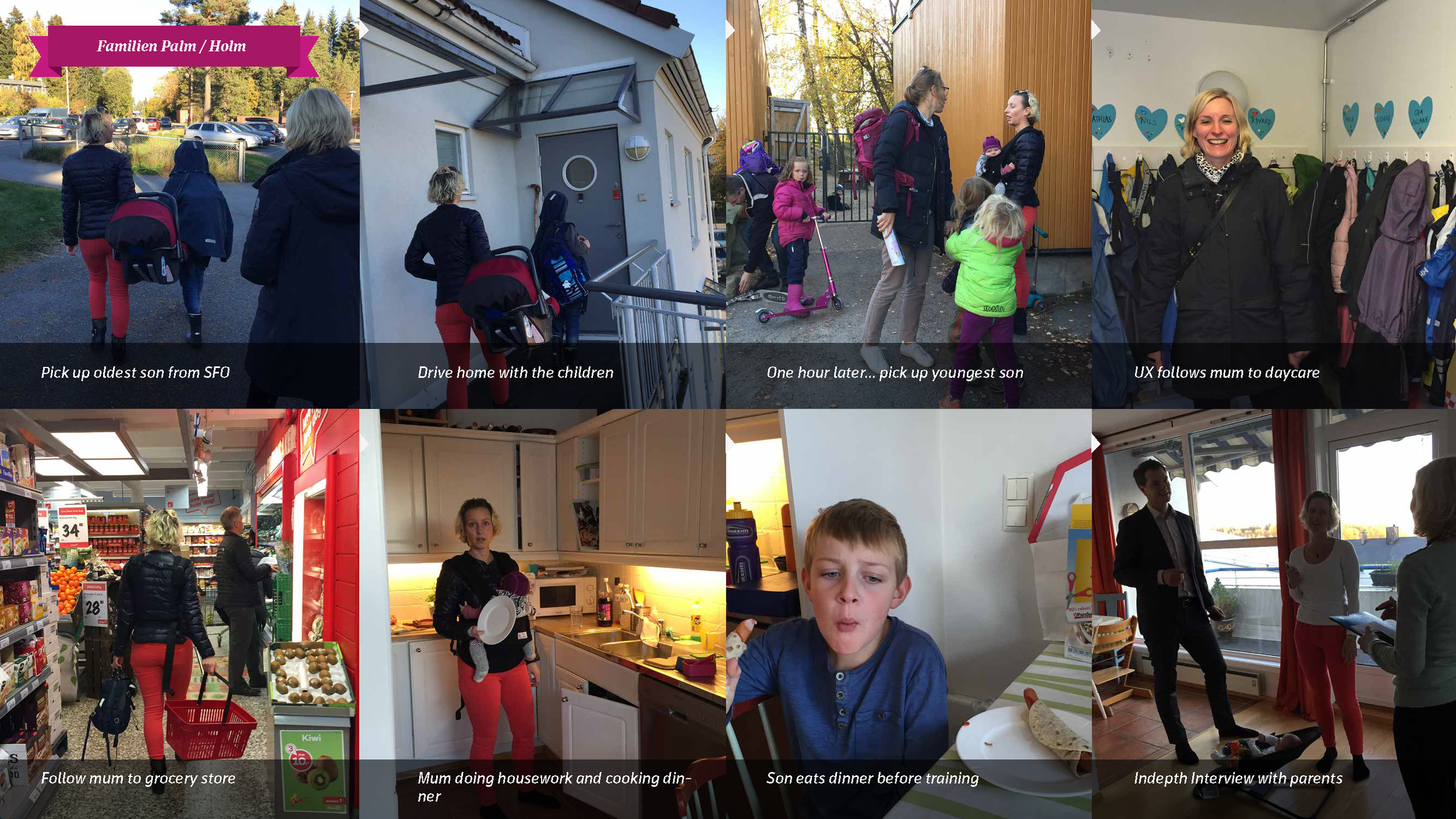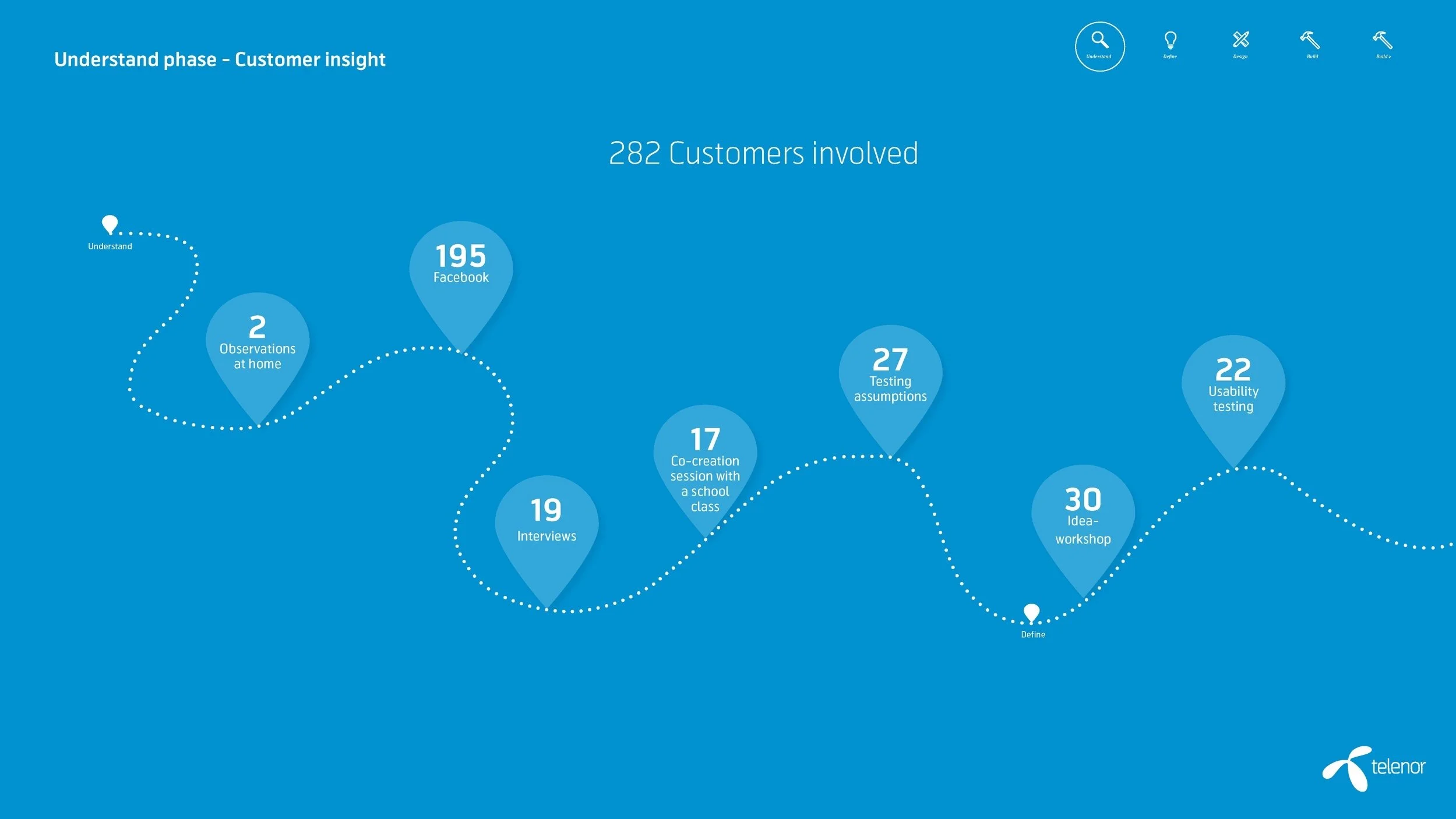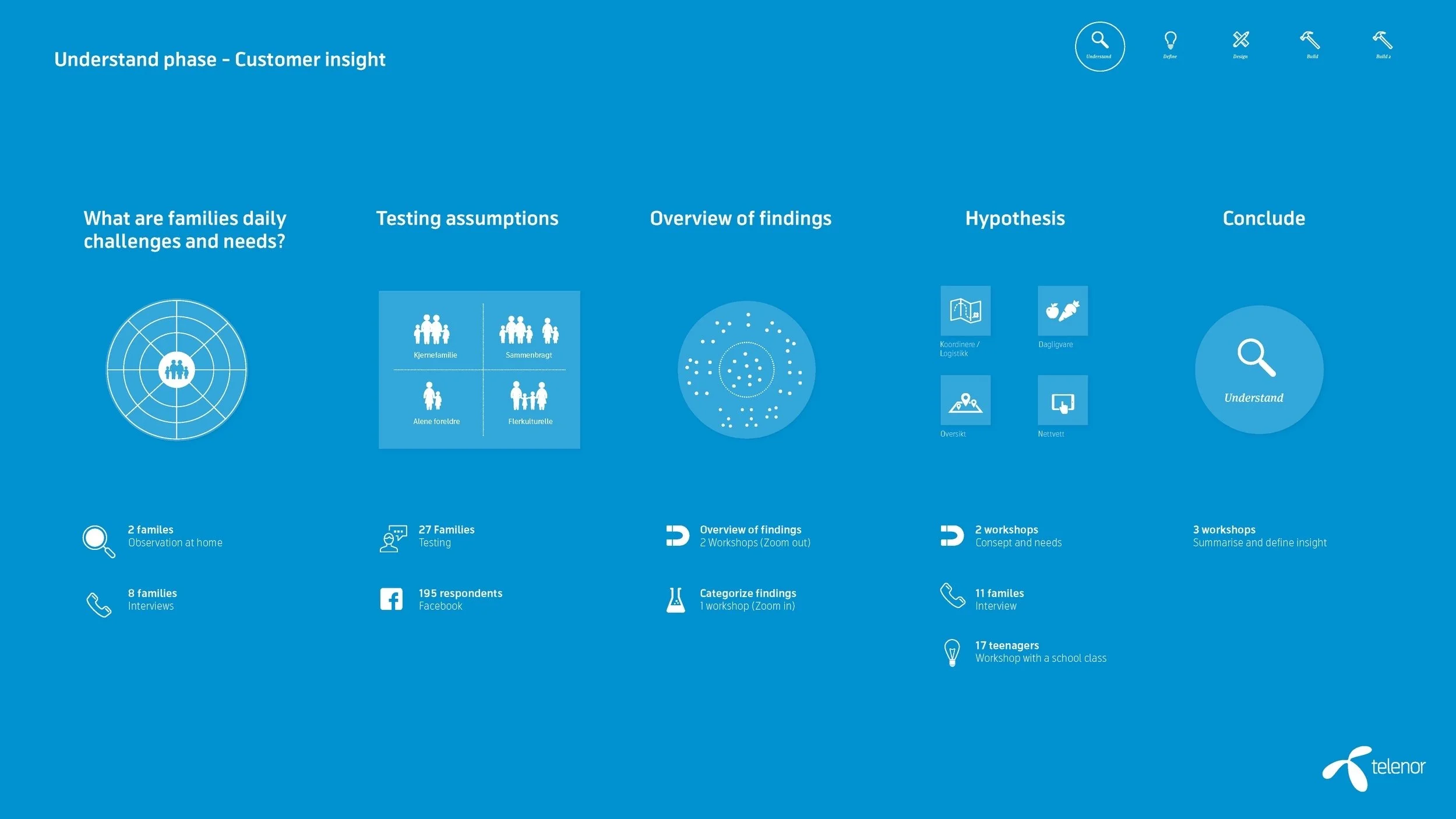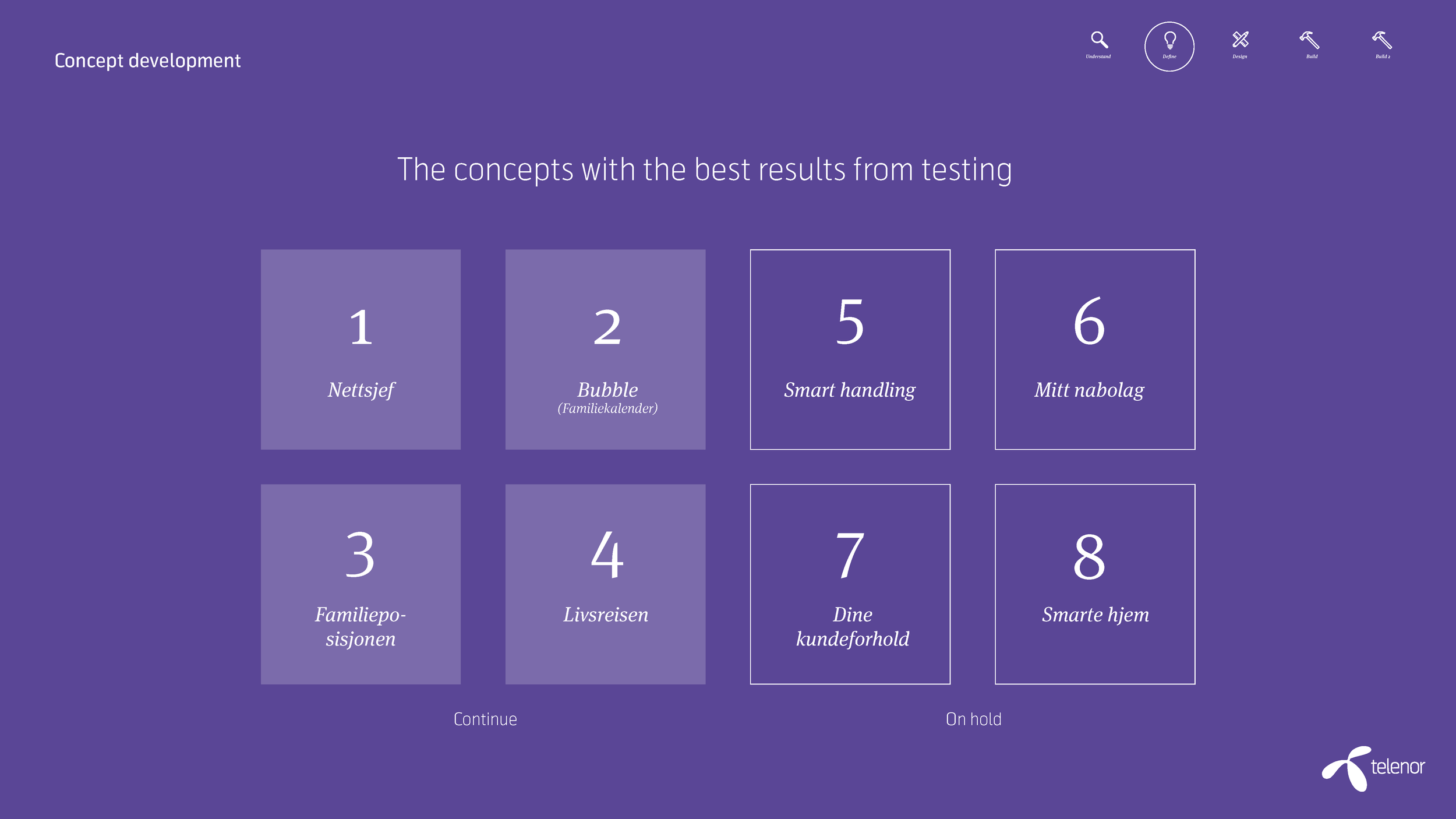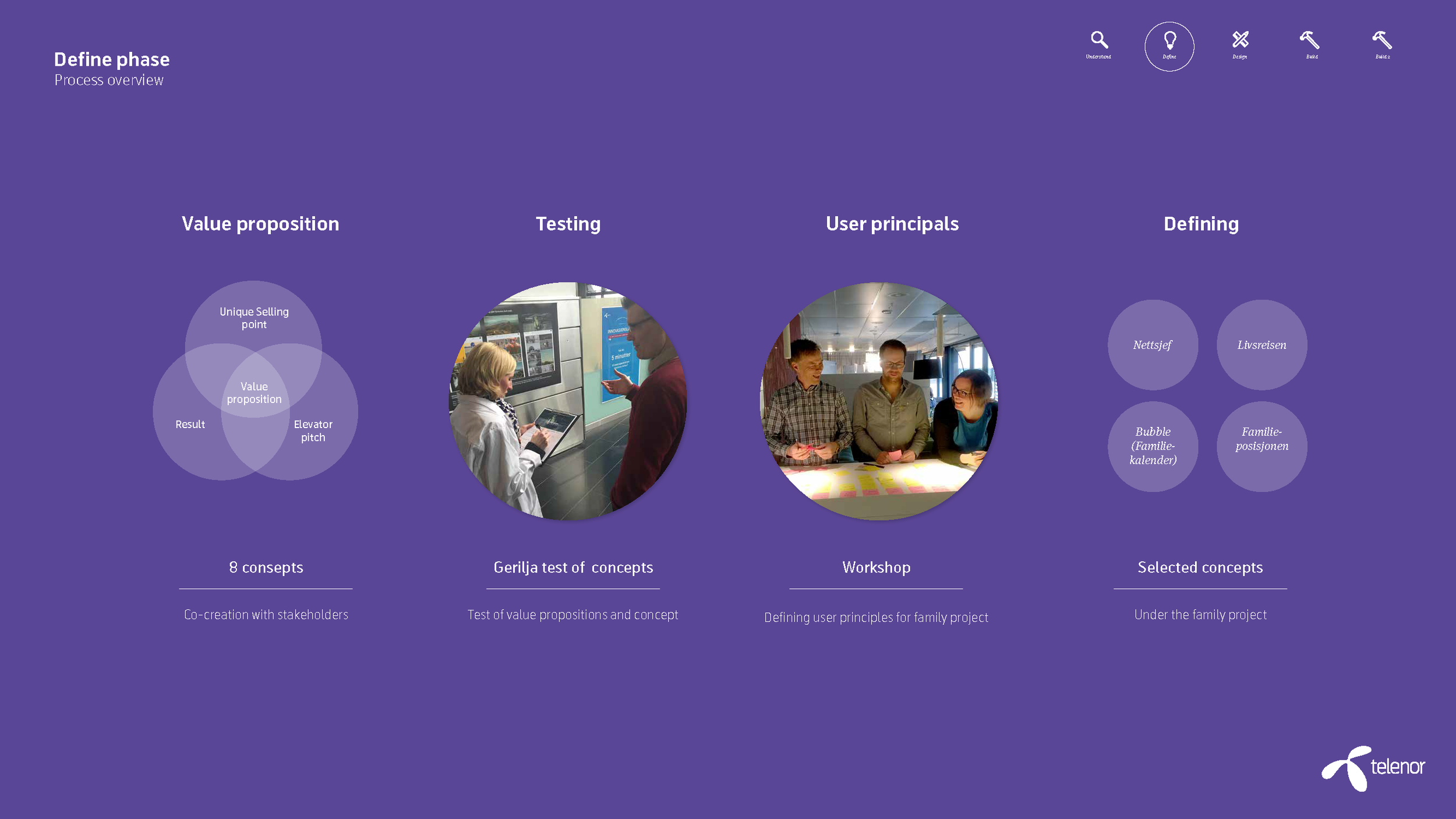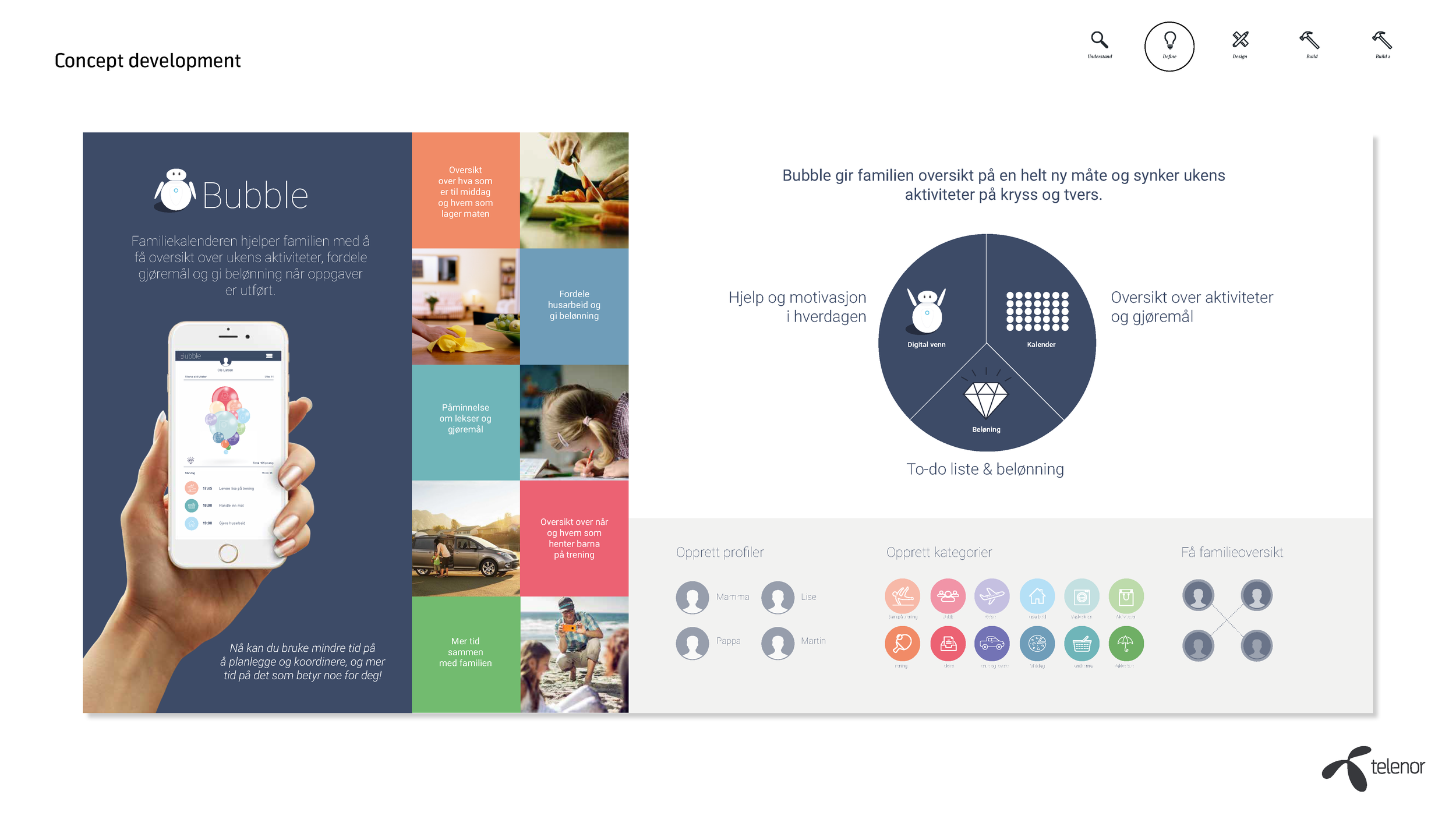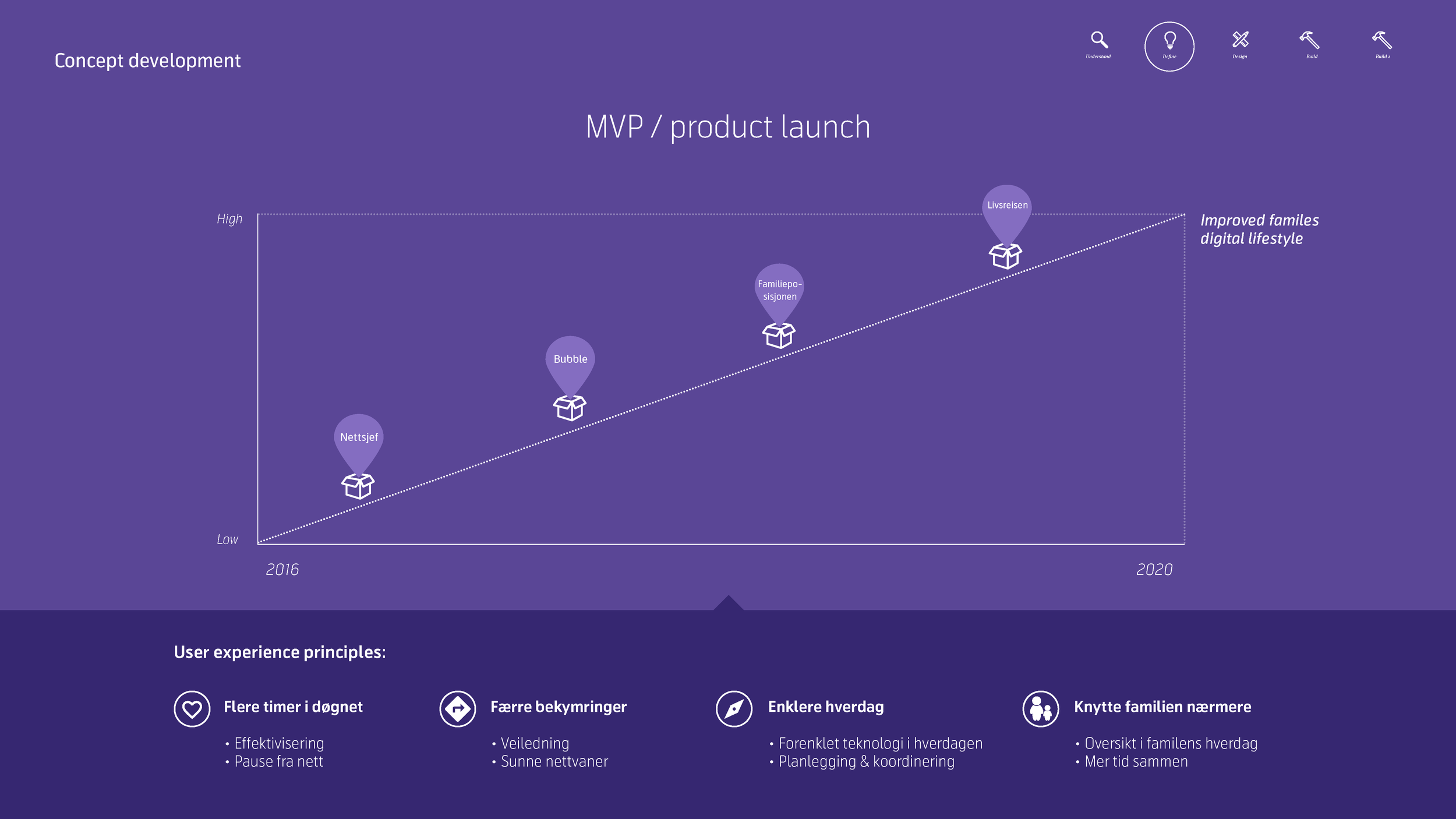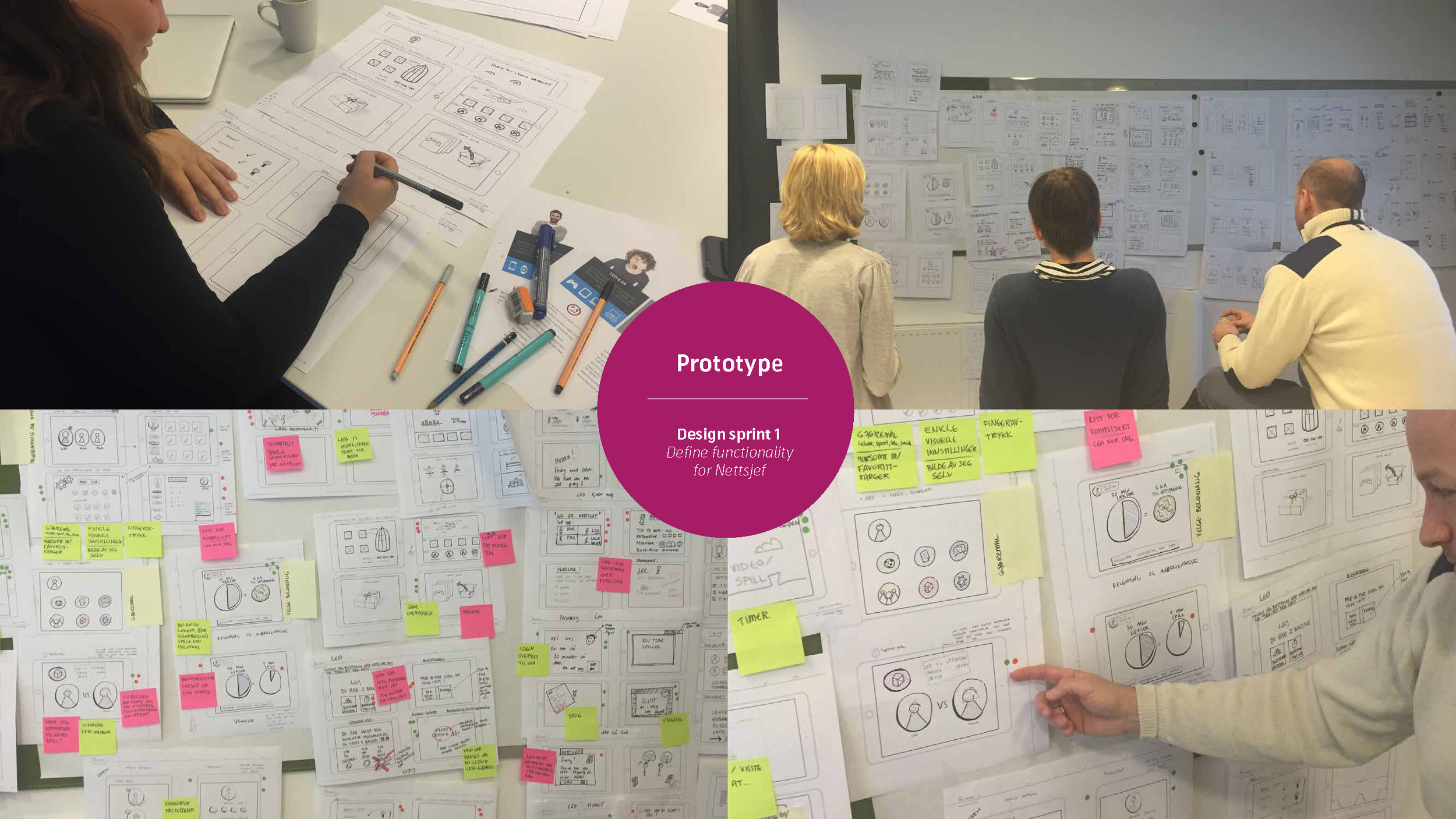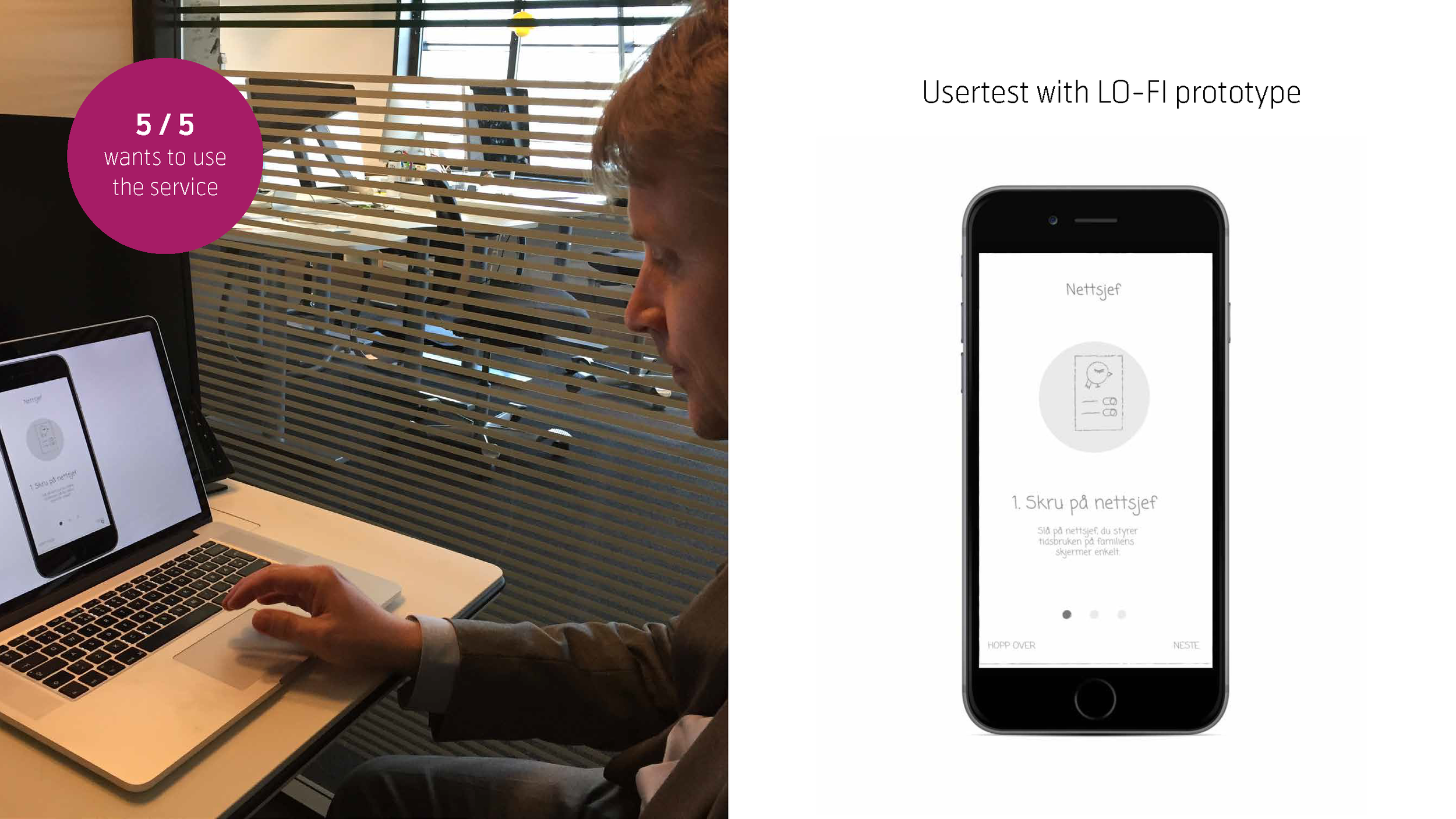The Family Project
An innovation initiative to design future digital services for Telenor, led by service designers using a cross-disciplinary and user-centered design process.
About the project
Background
Telenor has maintained a strong position in the family segment, primarily through the "Fri Familie" service. This project was established to explore opportunities to sustain and strengthen that position without competing on subscription discounts. The innovation process was designed to be user-focused, centering on customer needs to define success criteria for the business.
While the family segment was crucial to Telenor, the existing service portfolio had become outdated. The project's goal was to understand families' daily needs and develop concepts based on their everyday lives and diverse requirements.
A core team collaborated with a reference group representing various parts of the organization.
Problem statement
Identify user needs and develop new, innovative services for the family segment, aligned with Telenor’s brand positioning in telecommunications.
Target audience
The family segment.
Goal
Uncover new services that enhance Telenor’s differentiators. Deliver solutions aligned with Telenor’s pricing strategy as a premium brand focusing on value, not price competition.
User centricity
During the insight phase, we engaged with 282 users through various methods.
Conducted in-depth interviews with 8 families representing nuclear, single-parent, blended, and divorced families.
Developed user scenarios based on family dynamics and tested hypotheses through a Facebook survey.
Conducted usability tests to validate concepts.
The insight phase lasted approximately three months, focusing on understanding family life, identifying challenges, and uncovering opportunities. Insights from observations and interviews formed the basis for testing hypotheses with other families to validate their relevance.
Key Activities:
Defined family types.
Understood daily routines and challenges.
Observed and interviewed families about their needs.
Identified and refined problem areas.
Redefined target audiences.
Developed hypotheses based on current needs.
Tested hypotheses at various locations, including Fornebu, Storo, and Facebook.
Formulated future scenarios and tested hypotheses.
Conducted workshops with high school students.
Summarised and refined insights.
Insight
Through iterative processes, workshops, field studies, and user feedback, we developed hypotheses and tested them.
Key findings:
Observations - The Palm/Holm Family
A visit to the home of the Palm/Holm family, with children aged 0–9, offered invaluable insights. Observing users in their natural environment provided a deep understanding of their needs.
Participated in routines such as school pickups, grocery shopping, and evening activities.
Discovered challenges like managing shopping lists while juggling children and groceries.
Identified critical pain points, such as the need for synchronized family calendars and task delegation.
Observations - The Gjevestad Family
A typical evening with the Gjevestad family, including homework, dinner, and chores, revealed:
Coordination, grocery shopping, and online safety were common concerns across families.
Intimate family discussions provided insights into shared needs and interests.
Key Findings
Through user dialogue, we realized that family challenges were primarily driven by children's ages rather than family structures. We redefined our target audience and segmented families into four age-based groups:
-
Focused on parental oversight.
-
Emphasis on shared solutions.
-
Need for personalized services.
-
Balancing independence and family coordination.
Design process
From idea generation to user testing, we involved all business areas within Telenor.
Workshops and Testing: Collaborative workshops and user tests shaped our concepts, ensuring alignment with business objectives and user needs.
Concept Highlight: Family Portal - A digital platform tailored to family needs at different life stages, integrating smart solutions for seamless daily coordination.
My role as a lead designer
As a design lead I planned and led all phases of the project from pre-study to insight gathering, problem definition, and concept development. I designed and tailored the process to suit team members and a steering group that were new to this discipline.
As a facilitator I designed the process, conducted field studies, organized creative workshops, developed concepts, and used visual communication to clearly present key findings, concepts, and recommendations to both the project team and Telenor’s leadership.

